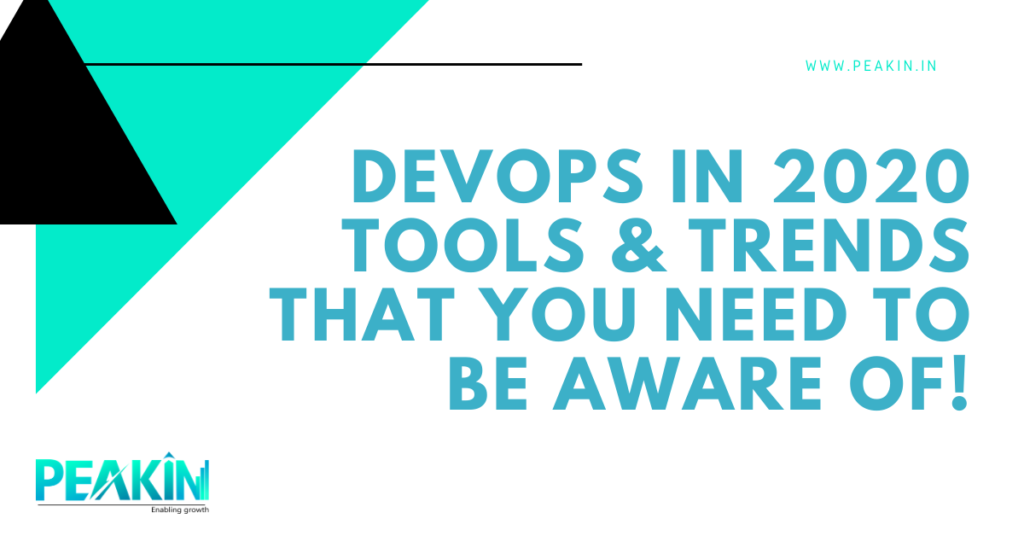
What is DevOps?
DevOps has been in the market since 2009, its popularity is still on the rise. As the name suggests, DevOps is the software methodology or approach that combines development and operations together, to ensure a continuous delivery & integration.
The core values that DevOps focus on are Automation, Accountability, Reusability, Collaboration, Transparency and Continuous improvement.
DevOps lifecycle:
A typical DevOps Lifecycle comprises eight different stages.
They are Plan, code, build, test, release, deploy, operate and monitor.
Plan: This stage involves requirement gathering and plan for the type of application/software that needs to be developed. This stage the team will have an overall picture of the process.
Code: From the plan or design, the coding is done for the client requirement.
Build: With the help of program/code that is written for client’s requirement, integrations (builds) are performed across different systems.
Test: Testing is a crucial step for any software lifecycle. Various testing is made and application is rebuilt if needed.
Release: Tested application is sent to the production environment and made live.
Deploy: The application is made live i.e. deployed to the cloud. This ensures the scalability of the application during high traffic.
Operate: If there are any minor bug fixes or other operations are made on the code.
Monitor: The application/software is continuously monitored and it is made sure that build is made as per client’s requirements. Modifications are made continuously to meet the client’s requirement.
And the DevOps lifecycle goes on and on ensuring continuous delivery.

Since the whole purpose of DevOps is to ensure the continuity in integration, the above steps are divided as follows.
Continuous Development: Plan & Code phases comprises continuous development. Planning of application objectives & code the requirements of the project.
Continuous Integration: Build phase ensures the continuous integration. Building the product and ensuring the continuous integration between systems.
Continuous Testing: Test phase is denoted as continuous testing as feedback is gathered time to time and modifications are made for the betterment of the application. Plan for the tests and verify the product/software usage in a live environment.
Continuous Deployment/Delivery: Release and deploy steps together form the phase continuous deployment. Ensuring the deployment of project with maximum accuracy.
Continuous Operation: This includes scaling and other operations that are made to the application. Automation of process to ensure quick release and development cycles.
Continuous monitoring: This is a crucial step as DevOps is a continuous process and needs to be updated for client’s needs. This is to improvise the current product and release new versions swiftly.
How DevOps Improves Business?
- Better Automation
- Shorter And Faster Development Cycles
- Stable Product Development
- Improved Customer Experience
- Early Detection Of Defects
- Faster Resolution Of Problems
- Continuous Feedback & Monitoring
- Digital Transformation
- Higher Productivity & Employee Engagement
- Improved Collaboration & Communication
DevOps Tools:
There are various DevOps tools available for software development lifecycle in the market. Let’s look into DevOps Tools that are highly sought after in 2020 based on the DevOps Cycle. The tools are grouped based on the lifecycle.
PLAN PHASE TOOLS:
Planning phase comprises development plan and project management tools & issue tracking DevOps tools are used.
Major tools that are widely used in 2020 are Jira, GitKraken and Trello.
CODING PHASE TOOLS:
Coding phase needs DevOps tools for hosting, IDE’s, Source control management and version control.
Some of the widely used tools are:
Hosting tools: GitLab, Azure DevOps, Bitbucket and GitHub.
IDE’s: IntelliJ, VS code.
Source control management: GitHub, CLI, GitKraken Git GUI
BUILD PHASE TOOLS:
The most popular build tools that are used are Jenkins, Maven, Gradle and Visual studio.
TEST PHASE TOOLS:
Most widely sought-after test tools are Selenium, Junit, Jest and PHPunit, Query surge.
RELEASE PHASE TOOLS:
We can separate the release phase tools into two. Configuration management tools & continuous delivery tools.
Configuration Management Tools: Ansible, Azure DevOps, Chef.
Continuous Delivery Tools: Jenkins, GitLab, Azure DevOps, Travis CI
DEPLOY PHASE TOOLS:
Some of the widely used deploy phase tools are Jenkins, Azure DevOps, AWS & Git Lab.
OPERATE PHASE TOOLS:
Operate phase tools are containers such as Kubernetes, AWS and Docker, PagerDuty.
MONITOR PHASE TOOLS:
Monitoring phase tools are divided into two, analytics/Monitoring and communication.
Most widely used DevOps Communication tools are Slack & Microsoft teams.
Google analytics, Grafana, Azure, AWS, Nagios, Raygun, Splunk are sought after analytics and monitoring tools in 2020.
Apart from the above, most popular automation build tools for DevOps are Puppet, Vagrant, Bamboo.
Choosing the right DevOps Tools for your enterprise is very important to improve productivity, integrate & automate and for delivering best results out of DevOps methodology.
DevOps Trends:

Technology is evolving day by day. Following are the emerging DevOps trends in 2020, to meet the ever-evolving technology and business expectations.
- Increased DevOps projection in software industry
The DevOps in the software industry is projected to increase from $2.9 billion in 2017 to $8 billion in 2022 (Source: IDC) and according to another report (by Grand view research), DevOps might hit a whopping $12.85 billion by 2025. 65% of organisations will adopt DevOps strategy. There is a 31% boost in DevOps adoption.
- Increased Test Automation
It is projected that 44% of Organizations to automate more than 50% of the testing process to ensure the acceleration of DevOps delivery. DevTestOps will be the future and will aid in high quality continuous delivery. Teams will have more time for innovation, rather than spending time on maintaining the code.
- Employing Assembly Lines
The major DevOps shift will be migrating to assembly lines from continuous integration pipelines. The advantages of assembly lines are interoperability, more concentration on business intelligence & analytics and faster scaling with “as-code” philosophy.
- Migration to Serverless Architecture
There is an increase in implementation of DevOps using serverless architecture and the market is expected to cross $7.7 billion in 2020. Serverless architecture will ensure resilient workflow, save time and cost than traditional architecture.
- AI and Data Science in DevOps
2020 has thrown a situation where teams have to go for zero-touch automations. DevOps as such a methodology generates a lot of data. By implementing AI and Machine learning, DevOps methodology can be enhanced, testing time can be reduced and all repetitive tasks can be automated. AI will be the future of automation and scaling DevOps in larger corporations.
Conclusion:
There is a projection of 31% more of DevOps adoption, 2020 seems like a promising year for DevOps. There are huge opportunities in the market for DevOps Engineers and there are varied tools to choose. Choose your ideal DevOps tools for your organization, Peakin will help in giving a customized DevOps training required for your organization. Contact us for enquiries.
